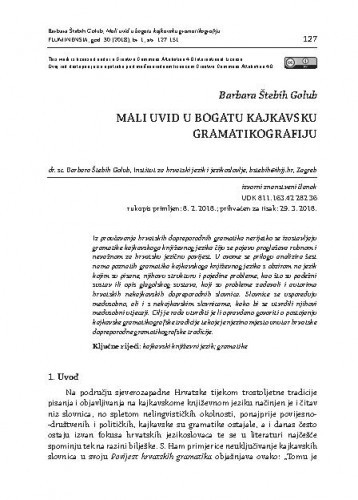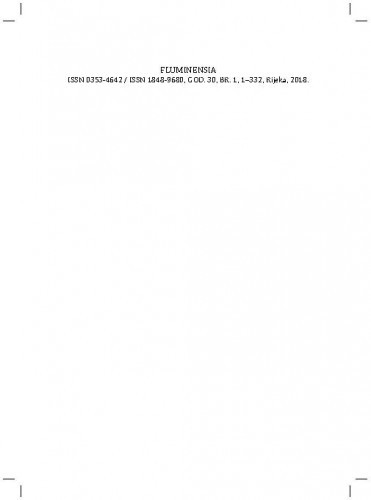Iz proučavanja hrvatskih dopreporodnih gramatika nerijetko se izostavljaju gramatike kajkavskoga književnog jezika čiju se pojavu proglašava rubnom i nevažnom za hrvatsku jezičnu povijest. U ovome se prilogu analizira šest nama poznatih gramatika kajkavskoga književnog jezika s obzirom na jezik kojim su pisane, njihovu strukturu i pojedine probleme, kao što su padežni sustav ili opis glagolskog sustava, koji su probleme zadavali i autorima hrvatskih nekajkavskih dopreporodnih slovnica. Slovnice se uspoređuju međusobno, ali i s nekajkavskim slovnicama, kako bi se utvrdili njihovi međusobni utjecaji. Cilj je rada utvrditi je li opravdano govoriti o postojanju kajkavske gramatikografske tradicije te koje je njezino mjesto unutar hrvatske dopreporodne gramatikografske tradicije.; The corpus of grammars of Kajkavian literary language comprises six grammar books: Ivan Vitković‘s Gründe der Croatischen Sprache zum Nutzen der deütschen Jugend verfasset (1779), Ignac Szentmártony‘s Einleitung zur kroatischen Sprachlehre für Teutsche (1783, Varaždin), Franjo Kornig’s Kroatische Sprachlehre oder Anweisung für Deutsche, die kroatische Sprache in kurzer Zeit gründlich zu erlernen, nebst beigefügten Gesprächen und verschiedenen Übungen (1795, Zagreb), Josip Ernest Matijević‘s Horvacka gramatika oder Kroatische Sprachlehre zum Gebrauche aller jener, besonders der Deutschen Kroatiens Einwohner, welche Lust haben, die kroatische Sprache gründlich zu erlernen (1810, Zagreb), Josip Đurkovečki‘s Jezičnica horvatsko-slavinska za hasen Slavincev i potreboču ostaleh stranskoga jezika narodov – Kroatisch-Slavische Sprachlehre zum Nutzen der Slavonier und Gebrauche der übrigen auswärtigen Nationen (1826, Budapest) and Ignac Kristijanović‘s Grammatik der kroatischen Mundart (1837, Zagreb). They are often excluded from the research of Croatian pre-Illyrian grammar books, since they tend to be proclaimed marginal and irrelevant for the Croatian language history. Based on the research of particular Kajkavian grammar books and their comparison, this paper proposes an overview that indicates the typical and common grounds for Kajkavian grammar books and emphasizes the most prominent and important differences. Special attention is given to the places which were problematic not only for the Kajkavian, but also for Croatian grammarians in general (for example, the number and inventory of parts of speech, cases, tenses and modality). It is determined that the authors of Kajkavian grammar books were familiar with the works of their predecessors, that they accepted their rules, references, and even examples, and this has resulted in numerous common places in the grammar books.
Sažetak

 Fluminensia : časopis za filološka istraživanja : 30,1(2018) / glavni i odgovorni urednik Aleksandar Mijatović.
Fluminensia : časopis za filološka istraživanja : 30,1(2018) / glavni i odgovorni urednik Aleksandar Mijatović.